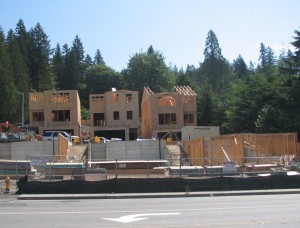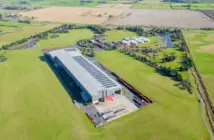A shortage of skilled labour, the rising cost of building materials and access to funding are fuelling concerns within the construction industry that it doesn’t have the capacity to meet demand for new building work
Despite New Zealand boasting a $37 billion pipeline of building work over the next five years, recent surveys have shown that many construction firms are hesitant to expand.
Firms have complained about the difficulty of attracting staff, despite the country’s expanding workforce, and reported that shortages of construction materials have led to long wait-times and mounting costs.
“The commercial property market is in good health, bolstered by a sound economy and continued growth in immigration,” Bayleys’ National Director Commercial and Industrial John Church notes.
“Construction now accounts for about 6 per cent of New Zealand’s gross domestic product – up from 5.1 per cent five years ago – and demand for quality commercial properties has never been higher.
“But there is unease within the construction industry. New Zealand’s construction sector is dominated by small firms, and many are worried about scaling up to meet demand.
“Most have expressed an unwillingness to invest in large developments due to concerns about increasing costs and land availability, and felt that access to labour, materials and funding could create difficulty for future activity.”
According to a Reserve Bank of New Zealand survey, firms have complained about the difficulty of attracting staff, despite the country’s expanding workforce, and reported that shortages of construction materials have led to long wait-times and mounting costs.
Global property and construction consultants RLB predicts that annual construction costs will escalate by up to 4 percent over the next four years. Tighter lending criteria has also constrained some companies’ ability to increase activity.
However, the main pressure point is skilled labour, with shortages expected to become more frequent and the battle for talent to intensify.
“We’ve seen demand escalate year on year, but New Zealand doesn’t have a massive transitory population that wanders through the economy on a regular basis,” AUT Professor of Construction Management John Tookey says. “We don’t have the equivalent of 2,000 Polish plumbers hoving into view across the Tasman.”
Most construction companies were averse to investing in speculative construction because they expected the market to take a downturn. “Developments get built when there is a definite commitment of funds from a client to the finished product,” Tookey says. “It comes down to risk versus reward.”
Ninety-eight per cent of construction companies in New Zealand are “small-fry” operations, Tookey notes. “They can’t ramp up construction because they can’t bulk buy materials or mass produce to make projects affordable.”
“Because of the historic boom-bust cycle in the construction sector employers and constructors are loathe to ramp up provision. Ramping involves buying more equipment, employing more staff and investing in more training, so when the bust comes, firms have to deal with all the additional overheads.”
The industry had never experienced a substantial rise in guaranteed demand, he said. Instead, there had been incremental increases in demand and opportunity, “so it’s very easy to leave things as they are, and squeeze a bit more capacity of what we currently have – sweat the asset as it were – rather than invest in new”.
Church says that a reduction in the supply of funding, coupled with an increase in its cost and an increase in construction costs, would likely mean less buyers in the market and put pressure on yields and prices.
He notes that cost escalation was a concern for the industry, especially with lengthy project times. “Most New Zealand developments require a significant amount of leasing commitment before they can progress past the planning stage,” Church explains. “Developments often take two to three years to complete, and as such can be prone to changes in the market.”
Precinct Properties said it had RLB regularly price its Commercial Bay development in central Auckland, and saw that escalation was evident during the latter half of 2015.
“The contractor for the job, Fletcher Construction, was able to offer up a number of fixed trade prices from sub-contractors and its final pricing was largely similar to RLB’s. Having the construction cost certainty was critical to proceeding with the project,” says a spokesman for the developer.
Church says that against the “backdrop of concern” within the construction industry, there had been a rise in the number of joint venture partnerships between established New Zealand firms and international contractors.
Fu Wah International chose China Construction to work with Hawkins Group on its $200 million 5-star Park Hyatt hotel project in Auckland’s Wynyard Quarter. In south Auckland, another Chinese construction firm, Changda Construction, has begun work on building a large housing project with commercial infrastructure and scope for several hotels. The $700 million investment is already fully funded.
The damage caused by November’s earthquakes also present challenges for the construction industry. Tookey believes the natural hesitancy already in the construction industry would be heightened as a result of the quakes and that there would be a “major reconsideration and re-litigation of current design standards to ensure that they are fit for purpose”.
“Everyone is being a bit cautious about what they are going to design to, which will potentially slow-walk a lot of projects,” he says.



